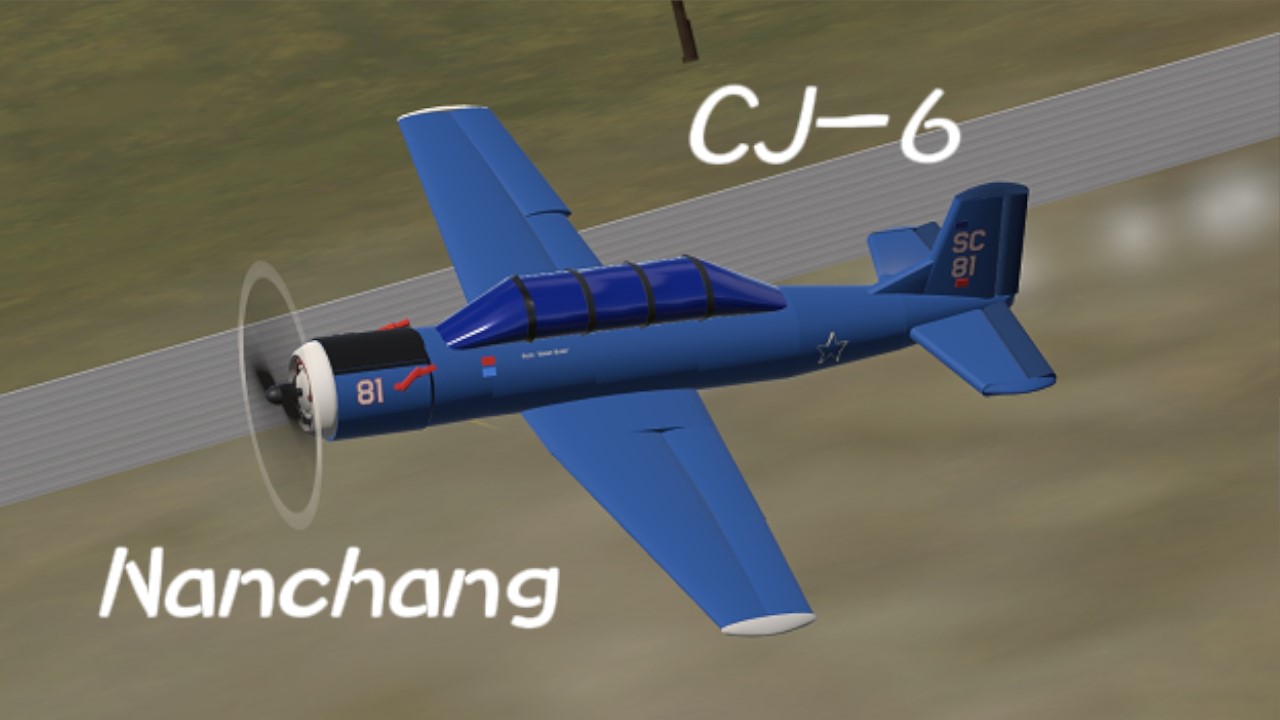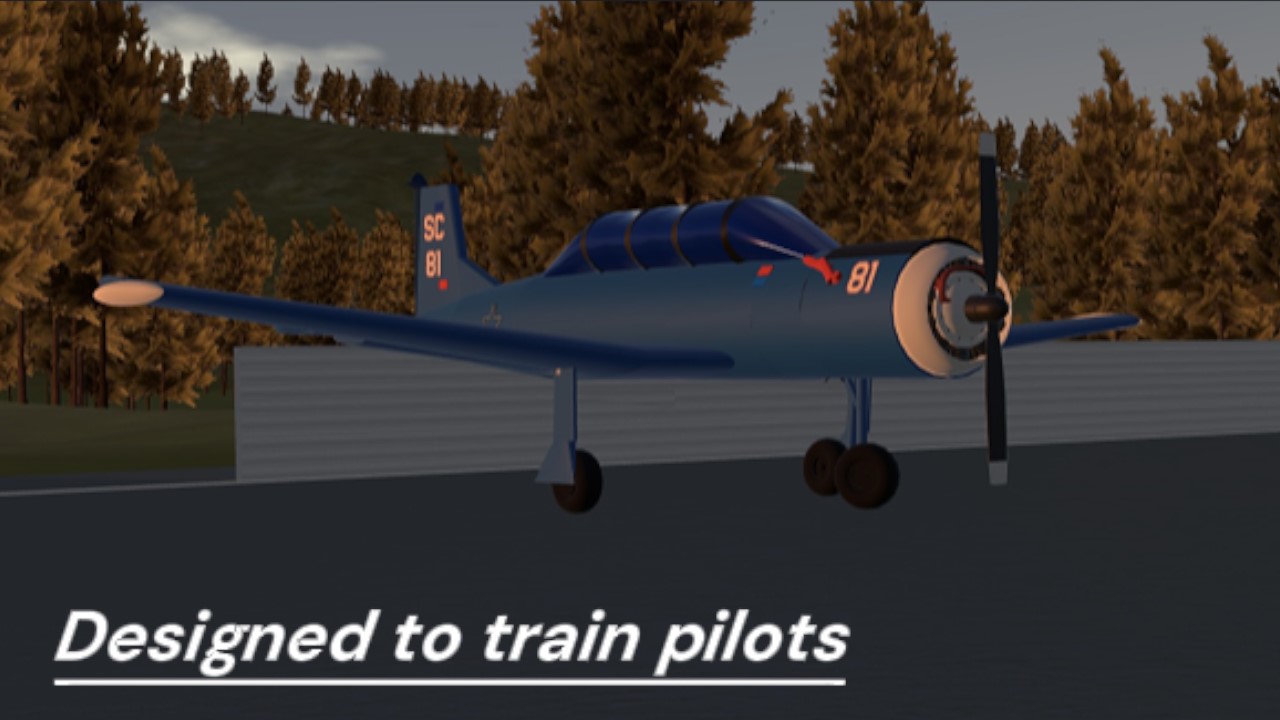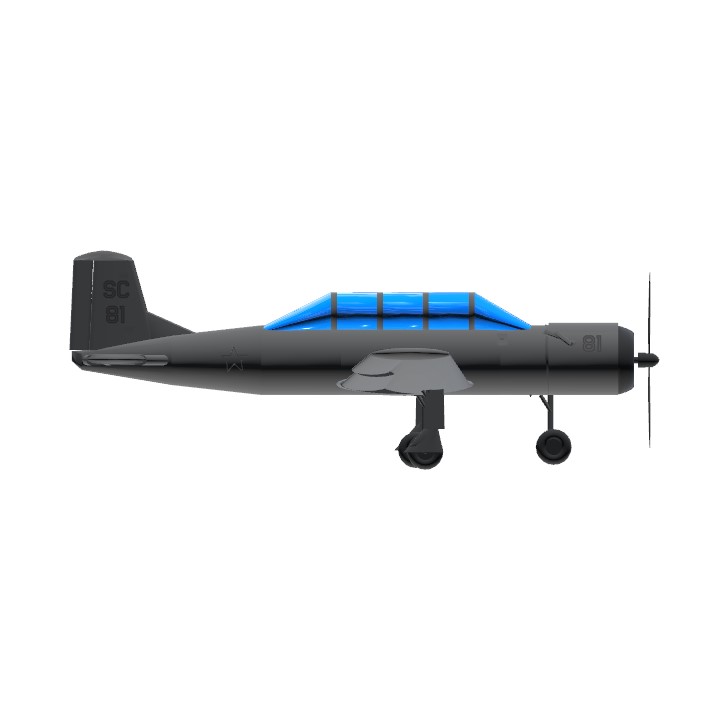Based off of N801VX. Source: Wikipedia. The CJ-6 (Chu Jiao ?? = Chuji Jiaolianji ????? = basic trainer aircraft) is an all-original Chinese design that is commonly mistaken for a Yak-18A. Its predecessor, the Nanchang CJ-5, was a licence-built version of the Yak-18. However, advancements in pilot training brought a need for a new aircraft with improved performance and a tricycle landing gear. When the Soviet Union developed the Yak-18A, PLAAF engineers decided that its performance and design would not suit China's needs.[1] The aircraft was designed in 1958 by the Nanchang Aircraft Factory (now Hongdu Aviation). As the Shenyang Aircraft Factory already had experience building the Shenyang JJ-1 begun technical research for the CJ-6, more than 20 Shenyang designers were transferred to Nanchang, including chief designers Tu Jida and Lin Jiahua.[2] Xu Shunshou and Huang Zhiqian, then China's top aircraft designers, were also involved.[1] During late 1957 Aeronautical Engineers Cheng Bushi and Lin Jiahua began work in Shenyang on a trainer design that addressed the shortcomings of the Yak-18A. The design they delivered featured an aluminum semi-monocoque fuselage, flush-riveted throughout, and introduced a modified Clark airfoil wing design with pronounced dihedral in the outer sections. The dihedral and an angular vertical tail distinguish it externally from the otherwise vaguely similar Yak-18A. Wind tunnel testing validated the design, and in May 1958 the program was transferred to the Nanchang Aircraft Manufacturing factory where Chief Engineer Gao Zhenning initiated production of the CJ-6. The first flight of the CJ-6 was completed on August 27, 1958, by Lu Maofan and He Yinxi. Enjoy this build!
Specifications
Spotlights
- CaptainBrayden 4 months ago
- WritersCrusadersAirCo2 4 months ago
General Characteristics
- Predecessor CJ-6 "NanChang" (WIP)
- Created On Windows
- Wingspan 29.6ft (9.0m)
- Length 23.9ft (7.3m)
- Height 9.0ft (2.7m)
- Empty Weight 2,013lbs (913kg)
- Loaded Weight 5,758lbs (2,611kg)
Performance
- Power/Weight Ratio 1.17
- Horse Power/Weight Ratio 0.173
- Wing Loading 97.4lbs/ft2 (475.4kg/m2)
- Wing Area 59.1ft2 (5.5m2)
- Drag Points 4322
Parts
- Number of Parts 113
- Control Surfaces 5
- Performance Cost 549






